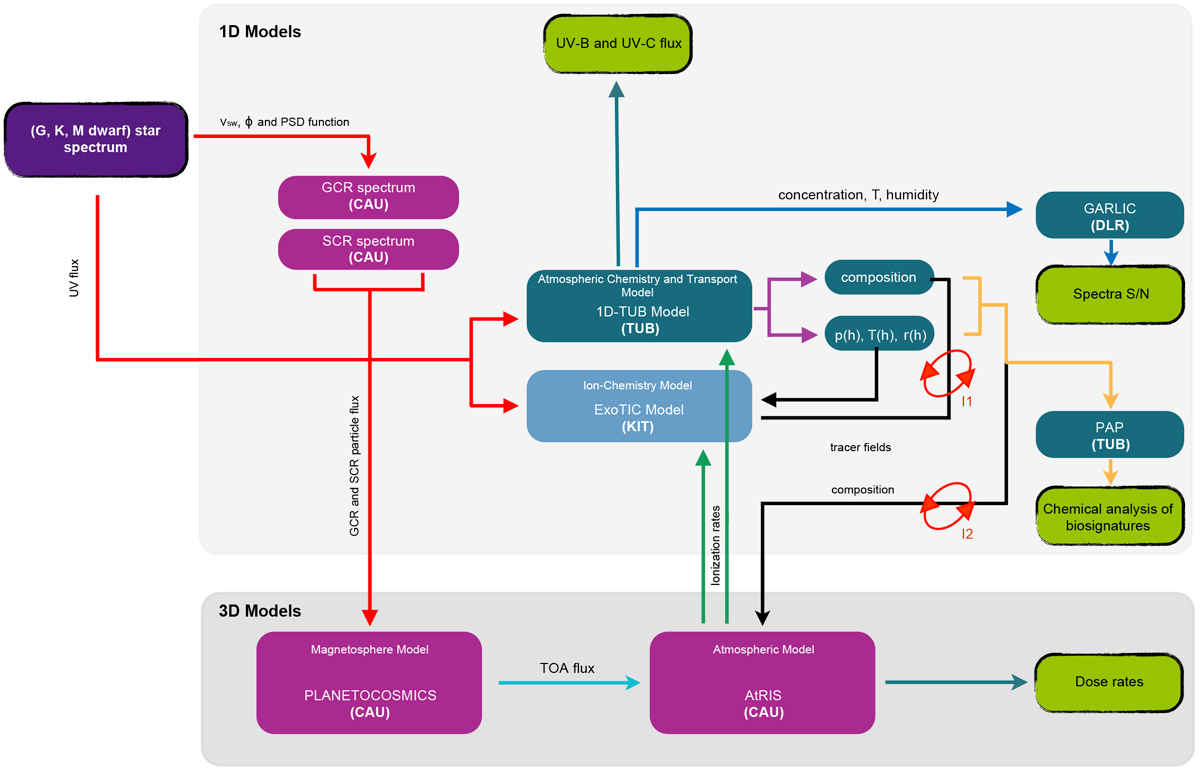Fig. 3

Data exchange in the model suite and associated scientific goals. The following steps are performed: (1) (top left) measured stellar UV fluxes, the estimates of the stellar wind velocities (vsw), stellar modulation (ϕ), and PSDs (Christian-Albrechts-Universität, hereafter CAU) are used as input for the 1D-TUB and ExoTIC models as well as to estimate the incoming GCR and SCR fluxes at the close-in exoplanets, respectively (highlighted by the red paths). (2) The transport of CRs through the planetary magnetosphere is studied with PLANETOCOSMICS in order to provide TOA proton fluxes as input to model both the GCR and SCR induced atmospheric ionization as well as the resulting dose rates on the planetary surface (light blue path), (3) computation of the secondary particle production due to CR interaction through the planetary atmosphere down to the surface, (4) calculation of the surface UV-A, UV-B and UV-C exposure as well as the radiation dose (turquoise paths), (5) determination of the impact of changing atmospheric ionization for the different atmospheric compositions as well as parameterization of the neutral atmosphere impact (green paths), (6) computation of the resulting atmospheric composition and climate (magenta paths), (7) performance of a pathway analysis in order to understand the biosignature chemical responses (orange paths), (8) utilization of the global atmosphericcomposition and temperature fields to compute atmospheric transit (primary) and emission (secondary) spectra (blue paths).
Current usage metrics show cumulative count of Article Views (full-text article views including HTML views, PDF and ePub downloads, according to the available data) and Abstracts Views on Vision4Press platform.
Data correspond to usage on the plateform after 2015. The current usage metrics is available 48-96 hours after online publication and is updated daily on week days.
Initial download of the metrics may take a while.


